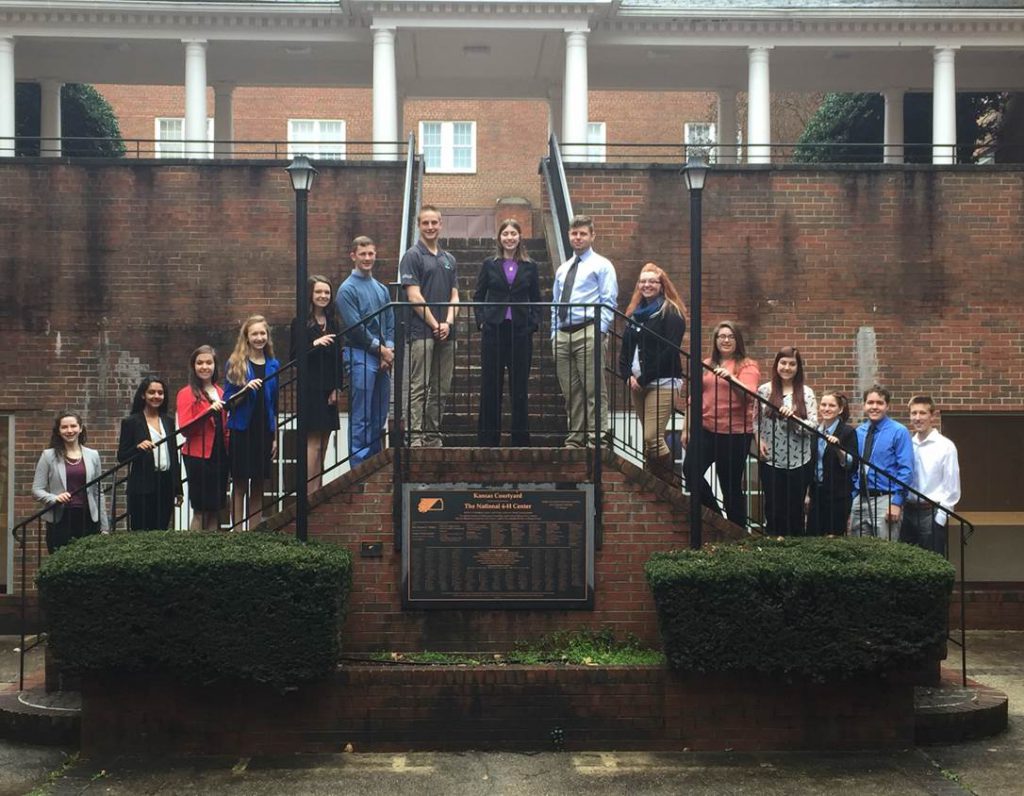By Julianna Ezzo, Collegiate Facilitator for National 4-H Conference 2017, and Alison Vaux-Bjerke, MPH, ORISE Fellow, Office of Disease Prevention and Heath Promotion
While regionally 4-H may be known for showing livestock, and arts and crafts, the organization seeks to help all members gain skills in the areas of public speaking, leadership, advocacy, team building, and goal setting. Every spring, 4-H clubs send delegates to the National 4-H Conference to put their skills into practice by addressing a challenge posed by a federal agency. The Office of Disease Prevention and Health Promotion (ODPHP) challenged a group of 4-H members to identify different adolescent ‘activity styles,’ or personas, and to provide the youth perspective for how to communicate the Physical Activity Guidelines for Americans to adolescents.

The Activity Styles Roundtable included fourteen high school-aged 4-H members from fourteen different states. Before coming together for the Roundtable, each teen collected information from other teens at their schools and in their communities through a variety of methods, including informal interviews and surveys. The teens presented the different activity styles of adolescents, hypothesizing the preferred types of physical activity and the barriers that keep them from being physically active for each activity style. They identified a number of personas under three broad categories: non-active, active, and athlete. In addition, the students discussed how ODPHP could better communicate the Physical Activity Guidelines to teens.
The 4-H teens also presented insights into how and why adolescents choose to be active or not.
Benefits: Teens realize the benefits of exercise. Many are motivated to exercise so they can live a healthier life, relieve stress, fulfill their competitive drive, improve their personal image, and gain social acceptance.
Barriers: Many struggle with time management as they balance homework and extracurricular activities—additionally some didn’t have convenient access to a gym or space to be physically active. Still others are limited by their socioeconomic status.
Types: Teens prefer physical activities like dancing, and outdoor activities like running, biking, and walking. Others enjoy strength exercises, organized sports, and other group activities.
Recommendations for communicating messages: To close their presentation, the students discussed how ODPHP could better communicate the Physical Activity Guidelines to teens. They suggested that ODPHP focus on how teens could integrate a sufficient amount of exercise into their lives, rather than providing rationales for why they should be more physically active. For example, the teens said that being shown sample exercises and/or exercise routines, which they can easily do, was more motivating than being told about how exercise decreases the risk of developing chronic diseases.
The delegates also suggested an interactive media campaign to catch more teens’ attention. To make information on a website interactive, the teens suggested adding pop-ups to remind users to be more active, which come on screen when you have been online for a certain amount of time; and an interactive Activity Styles chart, which encourages teens to find their personal activity style. They also recommended adding pages and links for adolescent influencers – coaches, PE teachers, and schools – so they can incorporate the activity styles into their education and training.
The 4-H team also advocated for an increased social media presence on Snapchat, Twitter, and Instagram, which are popular among their peers. They proposed a sample social media campaign, complete with hashtag, and suggested the campaign use a spokesperson to deliver weekly update videos, reaching teens across the country. Interestingly, the teens indicated that this spokesperson should be someone they can relate to, not a celebrity or professional athlete, in order to have broader reach and influence.
The 4-H teens only had two and half days to learn to work together as a group, discuss their topic, and prepare their presentation. Together the teens worked as a team and developed their organizational and public speaking skills, while providing valuable input about their age demographic to ODPHP. Their ability to come together to use their collective voice in this challenge to impact teens for generations was very impressive. ODPHP will take this input into consideration as it works with partner offices across HHS to update the Physical Activity Guidelines and thanks the 4-H delegates and their facilitator for their valuable input.